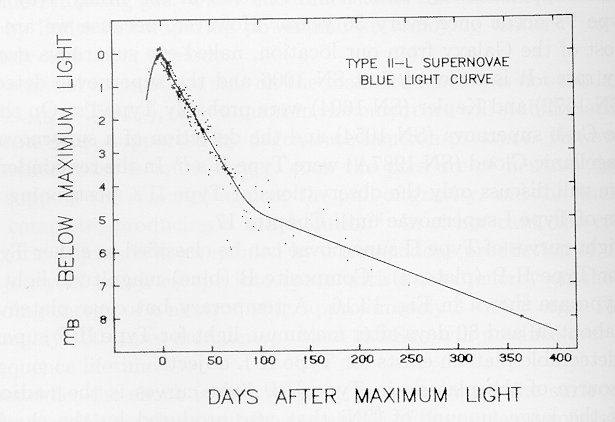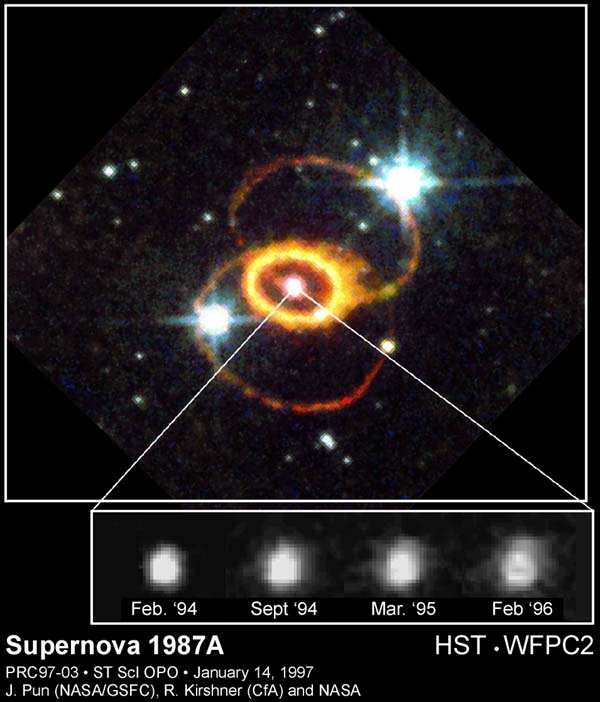
Historical naked eye supernovae:

Why is it shining? What provides the energy of a supernova?
Radioactive decay
When a supernova goes off, we see this energy emitted by radioactive decay.
First we have

Then we get

A short review of radioactive decay
Radioactive decay means that the number of isotopic nuclei drops like

where the half-life is defined as

So, in a homework you will show that since the luminosity must be related to dN/dt,

So the rate of decline of the light curve depends
on the
isotopic decay rate.
|
|
|
|
|
|
|
|
|
|
|
|
The Crab Nebula
The Crab has been found to be very rich in metals, like oxygen, carbon, iron, etc -- the products of nucleosynthesis. More interstellar recycling. What powers the Crab -- why does it shine? Certainly shock excitation plays a role, but that can't explain all the energy we see coming from the Crab. The supernova energy itself has been radiated away, so what else could be giving the Crab energy?? |
 |
Supernova 1987A:
It gives us a chance to observe a very young supernova remnant. We see a very young remnant, surrounded by dust and gas (about 1/2 parsec in diameter) which has been lit up by the supernova. We now see evidence that this ring is brightening, evidence that supernova ejecta is colliding with the ring.
|
 |